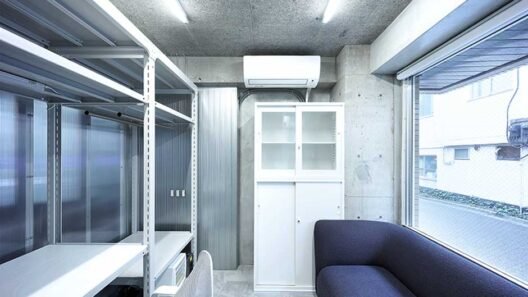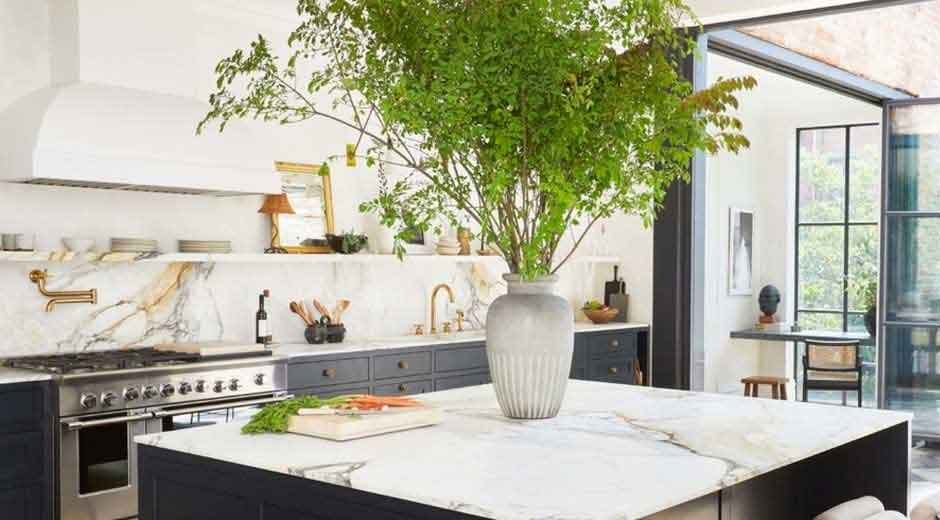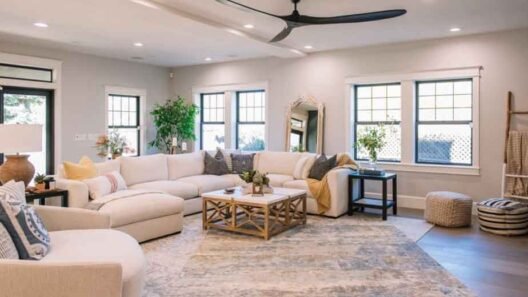Choosing a cabinet color for your kitchen is more than just picking a shade you like—it’s about creating a cohesive environment that reflects your lifestyle, complements your space, and supports the atmosphere you want to make in one of the most used areas of your home, advises the The Maryland and Delaware Services team. Whether you’re renovating your kitchen or simply updating your cabinets, color decisions can dramatically influence the room’s character and visual impact. From natural light to countertop materials, many subtle elements should be considered when making your choice. We will explore how to evaluate these elements, avoid common mistakes, and find a color that not only matches your kitchen design but also enhances the overall functionality and feel of your home.
Key Factors to Consider When Selecting Kitchen Cabinet Colors
- Evaluate Natural and Artificial Lighting in the Kitchen
Lighting plays a crucial role in determining how a cabinet’s color will appear once it is installed. The same shade can look vastly different under various lighting conditions, which is why it’s important to assess how light interacts with your kitchen throughout the day. For those installing cabinets in Scottsdale, where sunlight is intense and consistent, this consideration becomes even more crucial. Kitchens with ample natural light may benefit from cooler tones, such as pale blue, soft gray, or sage green, which bring freshness without overwhelming the room.
In contrast, dimmer kitchens can benefit from warmer tones, such as cream, light beige, or warm taupe, which help the space feel more inviting. Additionally, don’t overlook artificial lighting, especially if your kitchen is primarily lit by overhead or under-cabinet lights. LED lighting, in particular, can affect the undertone of paint, making it either warmer or cooler than expected. Always sample colors on the actual cabinet material and observe them under all lighting conditions before making a final decision.
- Consider the Overall Size and Layout of the Space
The size and configuration of your kitchen can guide your cabinet color selection more than you might expect. In smaller kitchens, lighter tones are typically recommended because they reflect more light, which creates the illusion of more space. Shades like ivory, light gray, or even soft pastels can make a small kitchen appear larger and more open. Larger kitchens, on the other hand, offer more flexibility. You might opt for a two-tone cabinet design, where the lower cabinets are a darker hue, such as navy or forest green, and the upper cabinets are white or light gray to maintain balance. The cabinet layout also plays a role. If you have open shelving or glass-front cabinets, incorporating bold or dark colors behind those areas can add contrast without overwhelming the space. Using color strategically according to the layout helps maintain visual balance and functionality, especially when blending aesthetics with practicality.
- Coordinate with Countertops, Backsplash, and Flooring
Your cabinet color should harmonize with the permanent elements in your kitchen, namely, the countertops, backsplash, and flooring. Since cabinets occupy a significant portion of visual real estate, their color should work in concert with these other surfaces rather than compete with them. If you have bold or patterned countertops, neutral cabinets can balance the visual weight and prevent the room from feeling too chaotic. On the flip side, if your countertops are understated, adding depth with colored cabinets can make the kitchen feel more dynamic.
Backsplash materials like ceramic tile, glass, or stone should also be considered, especially if they feature prominent colors or textures. Flooring, often overlooked, can either anchor or clash with your cabinet choice. For example, dark wood floors may not pair well with equally dark cabinets unless broken up with contrasting wall or ceiling tones. The goal is cohesion—a palette that flows effortlessly from one surface to another.
- Identify the Mood or Tone You Want to Create
Color plays a psychological role in how a space feels. Before selecting a cabinet color, consider the kind of atmosphere you want your kitchen to evoke. Do you want it to feel calm and relaxing, vibrant and energetic, or warm and cozy? Soft greens and muted blues tend to convey tranquility, making them excellent choices for homeowners who view the kitchen as a place of calm and nourishment. Bright white and cream shades convey a sense of cleanliness and minimalism, aligning with modern, clutter-free designs.
Bolder hues, such as deep red or mustard, can add warmth and energy, but are best used thoughtfully to avoid overwhelming the room. Neutrals, such as gray and beige, remain popular for their versatility and ability to pair well with both traditional and contemporary designs. Let the emotional tone you want to convey help guide your final decision—your cabinet color should feel like an extension of your personality and the experience you want to create.
- Account for Long-Term Trends and Timelessness
Trends in kitchen design change every few years, but your cabinets will likely remain in place for much longer. Choosing a color that will age well is essential if you want to avoid costly updates down the line. Timeless options like white, off-white, and soft grays continue to dominate kitchens because they adapt easily to new styles and accessories. While it can be tempting to opt for trendy options like bold black or deep teal, these colors can quickly date a kitchen unless carefully executed within a larger, cohesive design.
If you’re drawn to trendy colors, consider using them in smaller doses—like on an island or accent cabinet—while keeping the majority of the cabinetry in a more neutral tone. This strategy enables you to incorporate trend-forward elements without committing the entire space to a look that may not retain its appeal over time. Choosing with longevity in mind ensures that your kitchen remains stylish, functional, and aligned with future updates or resale considerations.
Choosing the right cabinet color for your kitchen is a thoughtful process that requires balancing aesthetics, functionality, and personal style. By paying attention to the room’s lighting, layout, permanent surfaces, and the mood you wish to create, you’ll be equipped to make a color choice that enhances your kitchen’s usability and design. A well-chosen cabinet color brings harmony to the space, tying together all other elements in a way that feels intentional and enduring.












